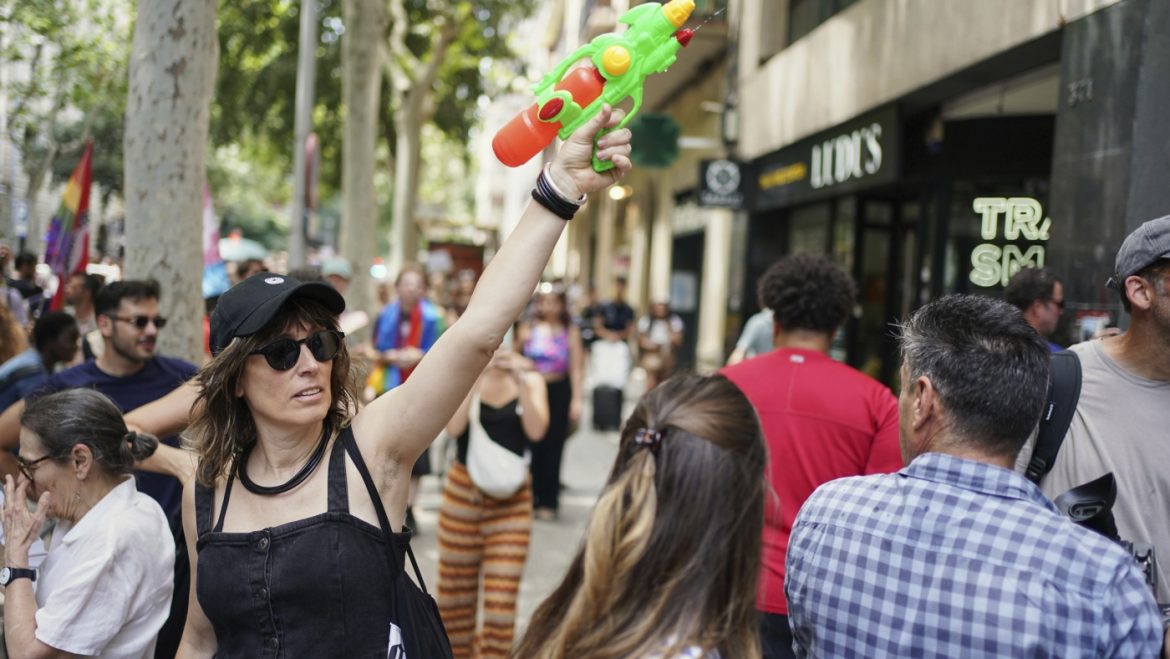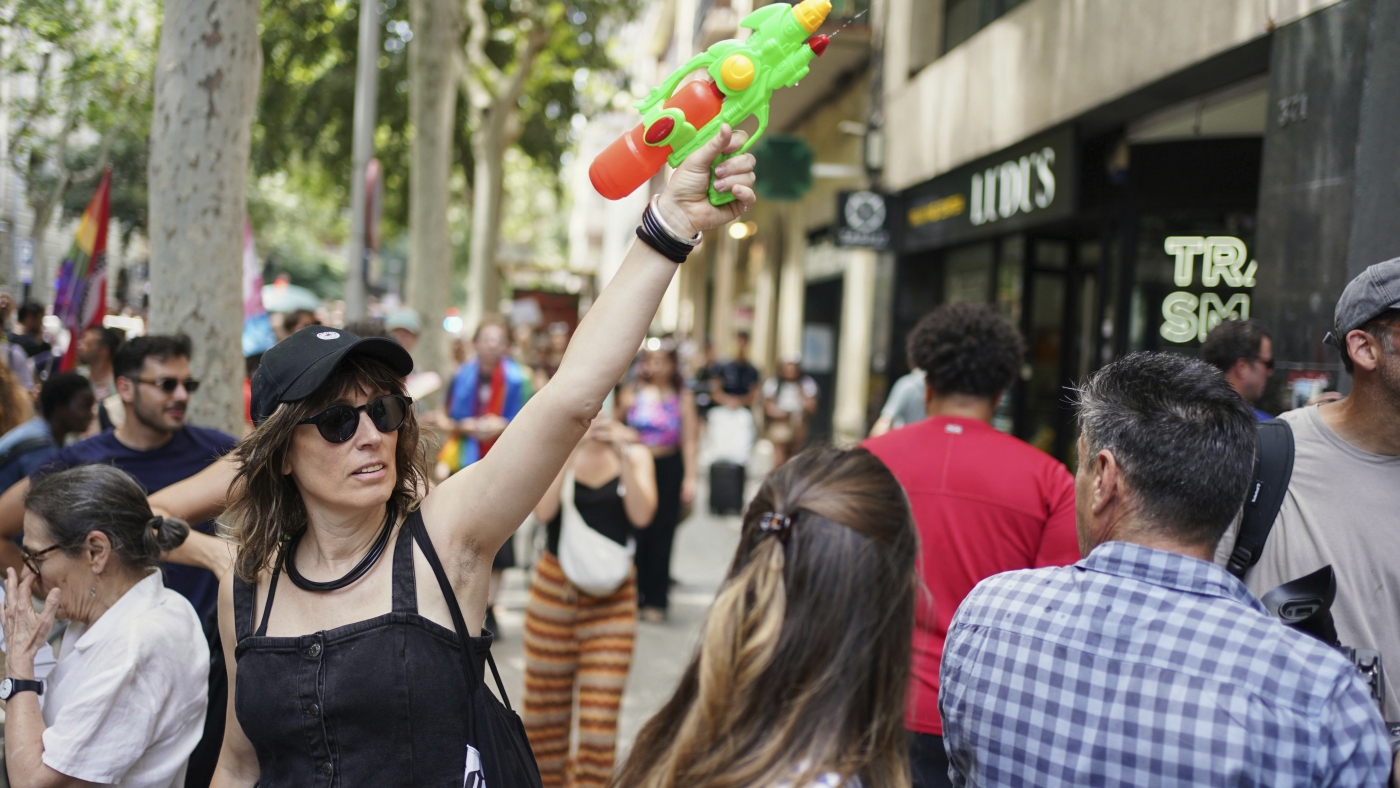The Wave of Water Pistols: Spain’s Creative Protest Against Mass Tourism
As cities like Barcelona and Mallorca grapple with the pressures of mass tourism, locals have adopted an unusual yet striking method of protest—arming themselves with water pistols and playfully targeting tourists. This demonstration goes beyond mere spectacle; it encapsulates deep-rooted frustrations about economic shifts, housing crises, and cultural erosion caused by the surge of visitors.
Understanding the Protest: Water Pistols as Symbols of Discontent
In recent demonstrations held in Barcelona and Mallorca, thousands of Spaniards marched through popular tourist districts, chanting slogans such as “tourists go home” and “everywhere you look, all you see are tourists.” Participants carried water guns, which they aimed at unsuspecting visitors, symbolically dousing them as a lighthearted but pointed form of resistance. While the tourists largely laughed off the sprays, the message was unequivocal: the current model of mass tourism is unsustainable and detrimental to local communities.
This approach reflects a clever blend of humor and urgency. It avoids outright aggression, which can alienate outsiders, yet captures attention through its playful nature. By choosing water pistols—a harmless but disruptive tool—protesters emphasize their desire to spotlight the issue without inciting serious conflict, encouraging dialogue and awareness rather than hostility.
The Root Causes: Housing Crunch and Economic Pressures
The protests stem from significant socioeconomic challenges linked to mass tourism, notably the housing market crisis. Cities such as Barcelona and Palma (the capital of Mallorca) have seen skyrocketing rental costs, spurred by landlords shifting properties from long-term residents to lucrative short-term tourist rentals. This trend diminishes affordable housing availability, displacing locals and altering the fabric of neighborhoods.
Txema Escorsa, a resident representative of Barcelona’s Gràcia neighborhood—once known for its community spirit and tranquil squares—illustrates the personal impact. He notes that familiar neighbors have been replaced by transient visitors and hard-partying tourists, with his salary as a teacher insufficient to keep up with rising living costs. These changes underscore how the tourism economy often enriches businesses and investors but leaves everyday citizens grappling with diminished quality of life.
The Protests in Broader Context: A Regional and Global Trend
Spain’s anti-tourism demonstrations are not isolated incidents. Similar protests have emerged in other European tourist hotspots like Venice, Italy, and Lisbon, Portugal. In these cities, residents also express weariness over the influx of visitors who contribute to environmental degradation, overcrowding, and the commercialization of authentic cultural experiences.
The widespread nature of these protests demonstrates a shared tension between economic benefits derived from tourism and the social costs borne by host communities. Economic reliance on tourism raises complex questions about sustainable development and local autonomy in urban planning.
Balancing Tourism and Livability: The Challenge Ahead
Barcelona’s city council has begun addressing these challenges by implementing policies designed to promote “quality tourism” over sheer volume. For instance, new regulations impose fees on tourists staying in luxury accommodations, aiming to manage visitor numbers and redistribute tourism benefits more equitably.
However, devising effective solutions requires a nuanced approach. Policymakers must balance the economic advantages of tourism—such as job creation, business revenue, and cultural exchange—with preserving housing affordability, community integrity, and environmental resources.
Impact and Reactions: Streets, Communities, and Visitors
The choice of water pistols stirred diverse reactions. While visitors received the water blasts with amusement, the protests spotlighted the locals’ genuine grievances. Demonstrators banging pots and chanting slogans added to the vibrant atmosphere, signaling a grassroots call for reflection and reform.
Community members involved in the protests convey a growing sentiment of alienation and marginalization. Their inventive tactics underline a desire for more inclusive urban policies that prioritize residents’ wellbeing as much as tourism profits.
Conclusion: A Splash of Awareness, a Wave of Change
The water pistol protests in Barcelona and Mallorca reveal the complex interplay between thriving tourism sectors and the sustainable functioning of local communities. By creatively engaging visitors in their message, Spaniards have found a compelling way to express dissatisfaction with an economic model they feel has contributed to a housing crisis and eroded the character of their hometowns.
As cities worldwide continue to grapple with overtourism, these demonstrations offer a powerful lesson: sustainable tourism must respect the needs of residents as vigorously as it pursues economic gain. The playful drenching of tourists serves not as mere mischief but as a vivid call for balance, urging a reconsideration of how destinations welcome the world without losing the essence that makes them unique.


